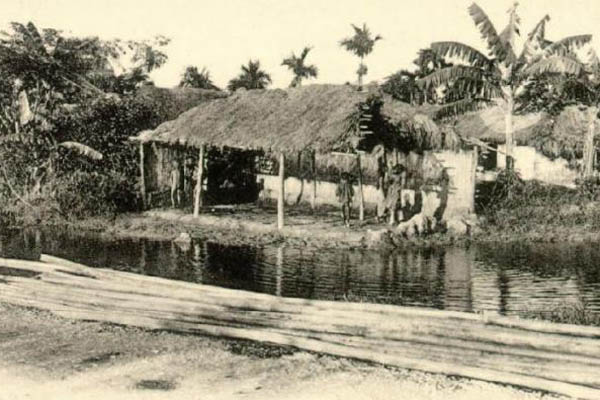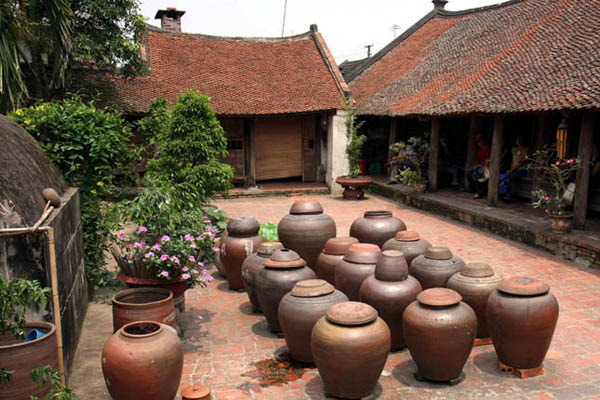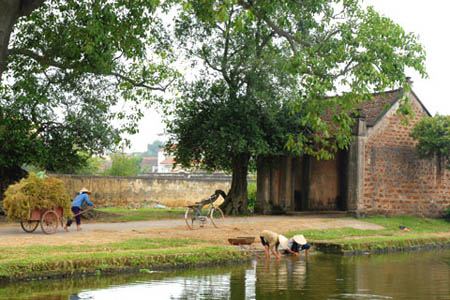The village is the basic unit of rural society, divided into hamlets (thôn, xóm). It is difficult to settle the question of the origin of the Viet village. According to archeological documents, ancestors of the Viet people left caves to settle in the Midlands and the Red River Delta between the 2nd and the 1st millennium BC. They organized themselves into groups and lived chiefly on low hills or the banks of rivers, swamps, and lakes. According to the Strange Stories of Linh Nam, the sons of the Hùng Kings received fiefs which they enclosed with wood; these were called “trang trại, or xách’ (the last meaning “fence” in Sino-Vietnamese).

The Importance of Villages
Early village were carefully hedged to defend against wild beasts and raids. In addition to private habitations, they had a public house for meetings and entertainment (like the present-day longhouses in the Central Highlands or communal houses in lowland villages). Private houses had outbuildings for storing grain and keeping animals. On the periphery, there was a cemetery, pastures and agricultural land. In the Ly and Tran dynasties (11th-14th centuries), the basic local administrative unit was the commune (xã). Under the Lê, the terms trang, động, xách, and trại designated mountain villages and hamlets, phường – a village with inhabitants carrying on the same trade, and vạn – a fishing village where fishermen lived on boats. King Minh Mạng restored the xã system, which has persisted up to date.

Different Forms of Villages
Vietnamese villages show a variety of forms. Topographically, there are ones in valleys, along with the coast, on islands, and so forth. Mountain villages in the North are called bản; those in the Central Highlands are called buôn. From the economic point of view, some are exclusively agricultural, while others specialize in handicrafts, fishing, or some combination of these. Traditional villages are surrounded by a hedge of thorny bamboo, sometimes with an earthen embankment as well. Each one may have several temples, at least one Buddhist pagoda, and a communal house for the worship of the village tutelary god.



